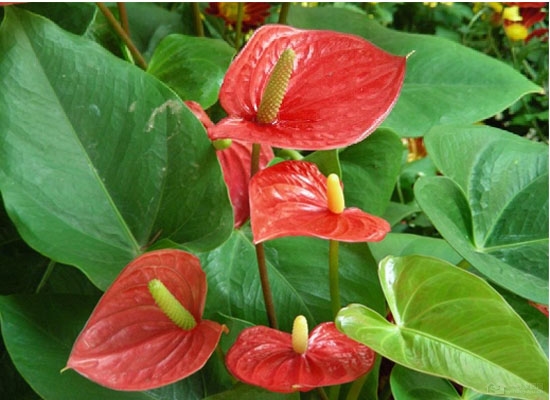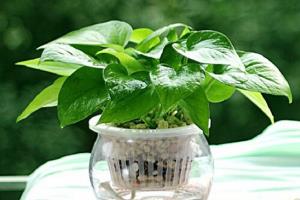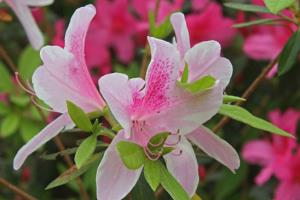Grasping the nine elements can make Anthurium andraeanum more beautiful.
Anthurium andraeanum, a golden stamen on the red petals, gorgeous and festive, has become a favorite household green plant for many families. However, there is still a lot of attention to Anthurium andraeanum culture, otherwise, it may make Anthurium palmatum lose its color. So, how to grow and raise Anthurium andraeanum to become a scene at home?

Anthurium andraeanum belongs to the genus Anthurium of Araceae, which has become one of the most important potted flower crops. Because of its bright color, unique shape and long flowering period, it is deeply loved by people. How to raise potted Anthurium andraeanum well, we should master the following nine elements.
1. Nutrients
1. Carbohydrate is the most important nutrient for the growth of Anthurium andraeanum, which comes from photosynthesis.
2. A large number of elements are needed in the growth process of Anthurium andraeanum, including nitrogen, phosphorus, potassium, sulfur, magnesium and calcium, which are mainly obtained from the matrix or artificially added.
3. Trace elements, such as iron, manganese, copper, zinc, molybdenum and boron, are derived from matrix or artificially added.
Second, lighting
Excessive light can inhibit plant growth and lead to discoloration or burns in the spawn of leaves and flowers. On the contrary, when the light intensity is too low, due to the lack of plant assimilation products, it is easy to cause smaller flowers, softer stems and lower yield. The suitable light intensity for Anthurium andraeanum growth is 10000 to 22000 lux.
Third, temperature
The growth of Anthurium andraeanum is sensitive to temperature. The suitable growth temperature is 14 ℃ to 35 ℃, the optimum temperature is 19 ℃ to 25 ℃, and the temperature difference between day and night is 3 ℃ to 6 ℃, that is, the temperature is 21 ℃ to 25 ℃ in daytime and 19 ℃ at night. If the temperature is lower than 13 ℃ for a long time, the plant will not die, but it will be difficult to resume growth for a long time; when the temperature is higher than 35 ℃ and the light is enough, the leaves are prone to burn, because the damaged leaves will not be reversed, which will directly affect the overall quality of Anthurium andraeanum.
Fourth, humidity
Anthurium andraeanum has relatively high requirements for air humidity. When the temperature is between 20 ℃ and 28 ℃, the humidity should be between 60% and 70%; when the temperature is above 28 ℃, the humidity should be between 70% and 80%. However, in winter, even if the temperature of the greenhouse is higher, it is not suitable to keep too much moisture, because the plant leaves are too wet will reduce its cold protection ability, easy to make frostbite, is not conducive to safe overwintering.
Fifth, watering
Natural Rain Water is the best water source for Anthurium andraeanum cultivation. The pH value of water is controlled at 5. 2 to 6. Between 1. Potted Anthurium andraeanum has different water requirements at different growth and development stages. In the seedling stage, because the root system of the plant is weak, the distribution in the substrate is shallow, and it is not resistant to drought, it should be watered at one time, often keep the substrate moist, urge it to draw more new roots early, and pay attention to the dry humidity of the basin substrate; in the middle and large seedling stage, the plant grows fast and requires more water, and the water supply must be sufficient; watering should be reduced and phosphorus and potassium fertilizer should be increased to promote flowering at flowering stage. In the process of watering, dry and wet must be carried out alternately, do not water in the case of serious lack of water, this will affect its normal growth and development.
VI. Matrix
The commonly used matrix is imported peat. In addition to the use of peat, more and more growers begin to use coconut bran. The sifted coconut bran can be used instead of peat, which has good wool absorption and relatively high air content. The use of 40% coconut bran will not cause any problems in cultivation.
V7. Fertilization
The principle of fertilization is "application of thin fertilizer frequently". Different compound liquid fertilizers were applied according to different stages of Anthurium andraeanum growth. Generally, the dry and wet degree of the substrate in the basin can be irrigated once in 2 to 3 days, once in 2 days in summer, once in high temperature, and 5 to 7 days in autumn.
8. Change the basin
When changing the pot, you should first pad a layer of medium at the bottom of the basin, and the thickness depends on the height of the medium and the depth of the flowerpot. Take out the Anthurium andraeanum seedlings from the small pot with the medium, place them in the center of the flowerpot, cover the soil to the junction of the root and stem, and then gently pat it.
IX. Diseases and insect pests
1. Strengthen the quarantine and disinfection of Anthurium andraeanum to prevent the entry of disease sources.
2. Improve the environment and cultivation techniques.
3. Prevention should be given priority to and regular spraying should be done.
The prevention and control of diseases and insect pests must adhere to the above three aspects complement each other.
Anthurium andraeanum has high requirements for water quality and humidity. This requires us to care carefully as growers, especially to pay attention to the different needs of Anthurium andraeanum in different growth periods.
- Prev

Is it all right to cultivate green pineapple with water? the culture skills of green pineapple
Is it all right to cultivate green pineapple with water? the culture skills of green pineapple
- Next

When azaleas bloom? can you control the blooming time of azaleas?
When azaleas bloom? can you control the blooming time of azaleas?
Related
- Wuhan Hospital Iron Tree Blooming Result Was Instantly Frightened by the Gardener Master
- Which variety of camellia is the most fragrant and best? Which one do you like best?
- What is the small blue coat, the breeding methods and matters needing attention of the succulent plant
- Dormancy time and maintenance management of succulent plants during dormancy
- Minas succulent how to raise, Minas succulent plant pictures
- What are the varieties of winter succulent plants
- How to raise succulent plants in twelve rolls? let's take a look at some experience of breeding twelve rolls.
- Attention should be paid to water control for succulent plants during dormant period (winter and summer)
- Watering experience of twelve rolls of succulent plants
- Techniques for fertilizing succulent plants. An article will let you know how to fertilize succulent plants.

